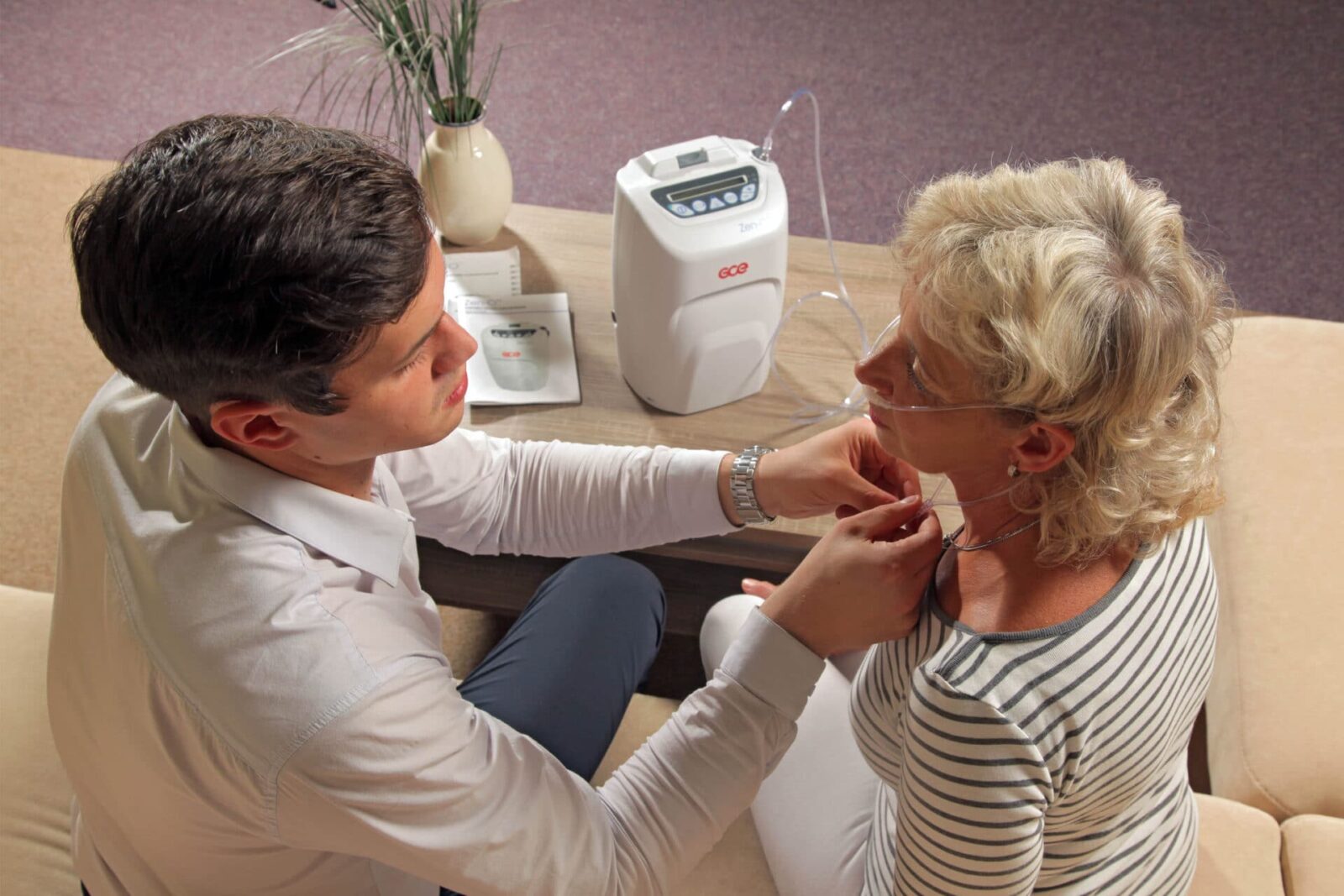For individuals with respiratory conditions such as COPD, emphysema, or chronic bronchitis, portable oxygen concentrators (POCs) offer freedom, flexibility, and peace of mind. These compact medical devices provide a steady supply of oxygen, allowing users to stay active at home or on the go. With technology rapidly improving, 2025 brings lighter, quieter, and more efficient models than ever before. This guide highlights the top 5 favorite portable oxygen concentrators in 2025, including key features, pricing, pros and cons, and tips for choosing the right unit. Whether buying out-of-pocket or through insurance, this article offers helpful resources to support a smart and confident purchase.
As the demand for mobility-friendly healthcare solutions continues to rise, portable oxygen concentrators (POCs) have become an essential part of daily life for many individuals managing respiratory conditions. These devices allow users to maintain an active lifestyle without being tethered to bulky oxygen tanks or restrictive cords. With advances in battery life, size reduction, and smart features, 2025’s leading POCs offer more freedom and functionality than ever before.
Whether it's running errands, taking a vacation, or simply moving around the house with ease, the right portable oxygen concentrator can make all the difference. For those researching the best units available today, this guide highlights top-rated models, pricing details, key features, and expert-backed tips to help find the most reliable and convenient oxygen solution for any lifestyle.

Why Choose a Portable Oxygen Concentrator?
Unlike traditional oxygen tanks, portable oxygen concentrators do not store oxygen—they create it on demand by filtering ambient air. This means no need for refills or bulky tanks, making POCs ideal for travel, errands, and daily life outside the home. Most models are approved by the FAA for air travel and offer pulse dose or continuous flow oxygen delivery, depending on individual needs.
They are especially beneficial for active users who want to maintain mobility while still managing their oxygen therapy. In 2025, newer devices are even more lightweight, battery-efficient, and user-friendly, with digital controls and Bluetooth monitoring features.
How to Choose the Best Portable Oxygen Concentrator
Choosing a POC involves understanding both medical requirements and lifestyle preferences. Start by confirming the prescribed oxygen flow rate and whether a pulse dose, continuous flow, or both are needed. Some models are optimized for night use, while others focus on portability for day trips or travel.
Next, consider battery life—longer battery options are ideal for travel, but may add weight. Also evaluate noise level, display features, ease of carrying (backpack vs. shoulder strap), and maintenance needs like filter replacement or cleaning. Most importantly, ensure the unit is FDA-approved and provided by a licensed distributor or DME provider.
Top 5 Portable Oxygen Concentrators in 2025
1. Inogen One G5
Weight: 4.7 lbs
Battery Life: Up to 13 hours (with double battery)
Flow Settings: 1–6 (pulse dose)
Pros: Quiet operation, compact design, long battery life
Cons: No continuous flow option
Price Range: $2,400–$3,200
One of the most popular and reliable POCs for active users in 2025.
2. Philips Respironics SimplyGo Mini
Weight: 5 lbs
Battery Life: Up to 9 hours
Flow Settings: 1–5 (pulse dose)
Pros: Sleek design, easy to carry, trusted brand
Cons: Louder than other models on higher settings
Price Range: $2,300–$3,000
A solid choice for everyday use and short trips.
3. CAIRE Freestyle Comfort
Weight: 5 lbs
Battery Life: Up to 16 hours (extended battery)
Flow Settings: 1–5 (pulse dose)
Pros: Ergonomic shape, long battery life, altitude compensation
Cons: Slightly bulkier than others
Price Range: $2,500–$3,200
Great for travelers needing long-lasting performance.
4. Inogen One Rove 6
Weight: 4.8 lbs
Battery Life: Up to 12 hours
Flow Settings: 1–6 (pulse dose)
Pros: New for 2025, improved efficiency and comfort, Bluetooth compatible
Cons: Still lacks continuous flow option
Price Range: $2,600–$3,400
An upgrade to the popular G5 model, with enhanced features and smart tracking.
5. OxyGo NEXT
Weight: 4.7 lbs
Battery Life: Up to 13 hours
Flow Settings: 1–6 (pulse dose)
Pros: Similar to Inogen G5, with excellent warranty support
Cons: Limited availability through DME providers
Price Range: $2,500–$3,300
Highly rated by users for portability and ease of use.
Pros and Cons of Portable Oxygen Concentrators
Pros
Lightweight and compact
No oxygen tank refills needed
FAA-approved for air travel
Rechargeable battery systems
Digital controls and mobile apps available
Cons
Higher upfront cost than traditional tanks
Some models don’t offer continuous flow
Requires routine filter cleaning or replacement
Insurance coverage may be limited
Resources for Buying and Quoting Portable Oxygen Concentrators
Major retailers: Amazon, Oxygen Concentrator Store, Inogen, Philips, and Vitality Medical
Quote comparison: Use platforms like Home Oxygen Direct, Lincare, or OxygenDirect.com
Insurance & Medicare: Medicare may cover part of the cost if deemed medically necessary, but rental models are more common than outright purchases
Used options: Certified refurbished units are available at a lower cost, but must be purchased from trusted providers to ensure warranty and quality
Professional fitting: Work with a respiratory therapist or licensed dealer to match the correct unit to medical needs
FAQs About Portable Oxygen Concentrators
Q1: Are portable oxygen concentrators covered by Medicare?
Medicare may cover rental units under Part B if deemed medically necessary, but it typically does not cover outright purchases.
Q2: Can a POC be used while sleeping?
Some POCs are optimized for night use, but those needing continuous flow oxygen at night may require a stationary unit.
Q3: Are POCs allowed on airplanes?
Yes, many models like the Inogen G5 and SimplyGo Mini are FAA-approved for air travel. Always notify airlines in advance.
Q4: How long do portable oxygen concentrators last?
Most quality models last 4–7 years, depending on maintenance, usage, and battery replacement.
Q5: What’s the difference between pulse dose and continuous flow?
Pulse dose delivers oxygen only when inhaling, conserving battery. Continuous flow provides a steady stream, necessary for certain conditions and night use.
Portable oxygen concentrators in 2025 offer greater independence, longer battery life, and smarter technology than ever before. With sleek, quiet, and travel-friendly designs, they’re perfect for staying active without sacrificing respiratory support. The top 5 models on the market balance power, convenience, and price—making it easier to find the perfect match for lifestyle and medical needs.
Whether exploring new travel opportunities or simply moving more freely at home, choosing the right POC ensures comfort, reliability, and peace of mind. Take time to review features, consult a medical provider, and request a quote to find the unit that’s right for long-term oxygen success.


